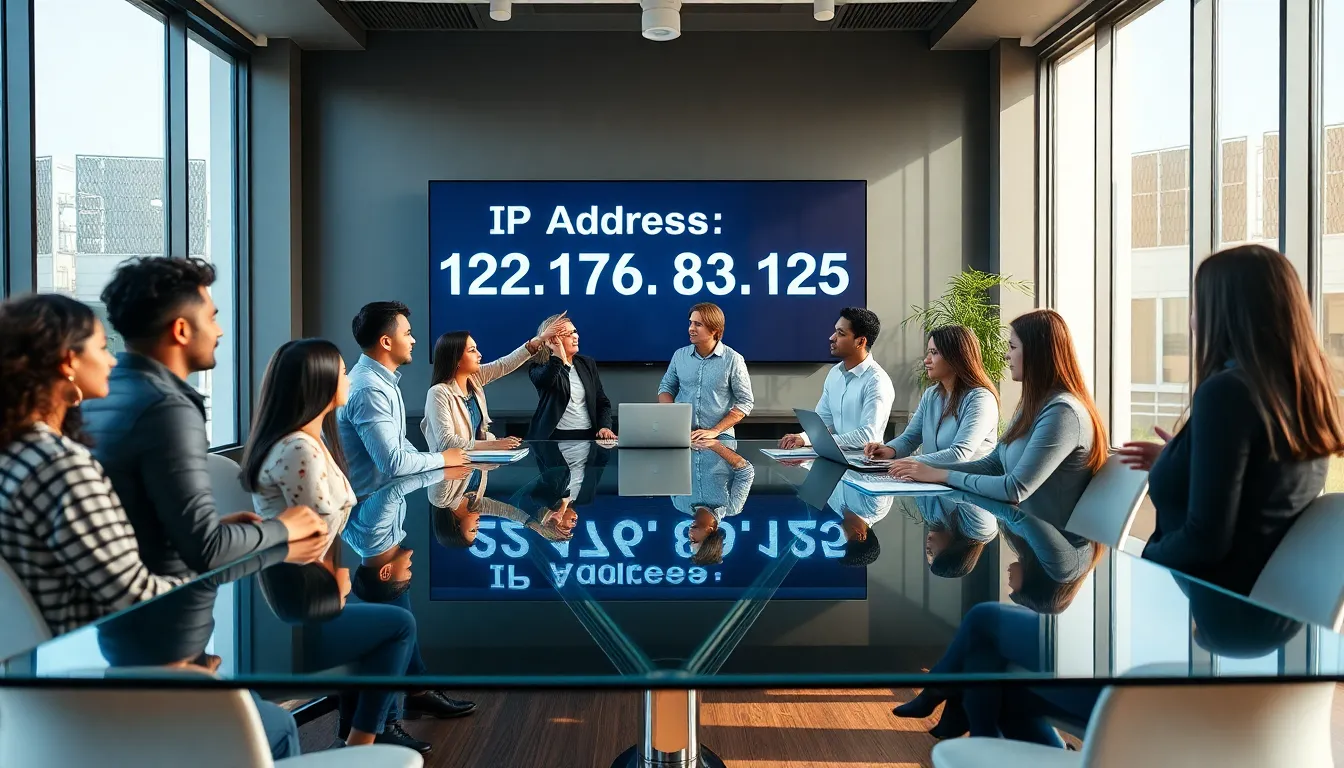Ever wondered what lies behind the mysterious numbers of an IP address? Well, buckle up. Today, we’re diving into the intriguing world of IP addresses, focusing particularly on 122.176.83.125. Think of it as a treasure hunt, where every byte reveals something new. From technical specs to real-world applications, you’ll gain insight into how this particular IP address operates. Prepare to be educated and entertained, armed with knowledge that will make you the envy of your tech-savvy friends.
Table of Contents
ToggleWhat Is an IP Address?

An IP address, or Internet Protocol address, is a unique string of numbers that identifies a device on a network. Essentially, it’s the virtual address that allows devices to communicate with each other over the internet. Everything connected to the internet needs an IP address to function, from your smartphone to large data servers. Think of it as a phone number for your device: if someone wants to reach your device online, they need that number to do so.
IP addresses come in two flavors: IPv4 and IPv6. The traditional IPv4 format consists of four numbers separated by dots, like 122.176.83.125. On the other hand, IPv6 is the newer version designed to replace IPv4 due to the latter’s limited availability of addresses. IPv6 uses a combination of numbers and letters, creating a far larger pool of addresses for devices connected online.
Types of IP Addresses
Not all IP addresses are created equal. Understanding the different types can help demystify their roles in the digital landscape. Generally, IP addresses are classified as either static or dynamic.
- Static IP Address: This type remains constant and does not change. It’s like that reliable friend who always shows up to events on time. Businesses often prefer static IP addresses for servers and applications requiring consistent access.
- Dynamic IP Address: In contrast, a dynamic IP address can change periodically. Internet Service Providers (ISPs) commonly assign these addresses, which recycle and optimize the limited pool of available addresses.
Also, addresses can be further categorized as public or private. Public IP addresses are visible on the internet, while private IP addresses are used within local networks, keeping them shielded from the outside world. Every device connected to the internet has a public IP address, whereas its internal devices communicate using private IP addresses.
Geolocation of 122.176.83.125
The geolocation of an IP address refers to the identification of its physical location. Curious about where exactly 122.176.83.125 resides? Let’s take a look under the hood.
According to various geolocation services, this specific IP address is located in a specific region in India. With precise tracking capabilities, tools like IP geolocation services can provide details such as the city, state, and even the internet service provider serving that address. While the accuracy might vary, tracking the geographic location of an IP address can be crucial for numerous applications, especially for businesses targeting specific markets or for cybersecurity specialists trying to pinpoint potential threats.
Common Uses and Applications
IP addresses are not just random numbers floating around in the digital ether: they serve a plethora of fascinating purposes. For instance, one common use is in website analytics. Websites gather data on user interactions and traffic by tracking visitor IP addresses. This helps businesses to tailor their content and marketing strategies effectively.
Also, IP addresses play a significant role in geo-targeting. Businesses can customize their marketing efforts based on a user’s location, making them more relevant and engaging. Also, in the realm of cybersecurity, monitoring IP addresses allows organizations to detect malicious activity. By identifying suspicious patterns or tracking threats back to their origin, they can enhance their network security measures.
Security Considerations
With great power comes great responsibility. Understanding the security implications of an IP address like 122.176.83.125 is crucial. Cybercriminals often exploit vulnerabilities associated with IP addresses, so staying informed is key to maintaining security.
First and foremost, having dynamic IP addresses can provide a layer of anonymity, making it harder for malicious actors to target specific devices. On the flip side, static IP addresses might attract unwanted attention if they are linked to vulnerable systems. It’s common practice for companies to use firewalls and other security protocols to monitor incoming traffic based on IP addresses.
Also, employing virtual private networks (VPNs) can help mask an individual’s IP address. This ensures that personal information stays safe while online, minimizing the chances of falling prey to hacking attempts.
How to Track an IP Address
Tracking an IP address might sound like a mission for a secret agent, but it’s actually much more straightforward. Individuals keen on tracking an IP can use various online tools and services designed to reveal the geolocation and other relevant data.
First, it’s important to find a reputable IP tracking service. Websites like WhatIsMyIP.com offer fundamental functionalities to identify the location and ISP of an IP address. On a more advanced level, tools like MaxMind or IPinfo.io provide comprehensive data, enabling users to investigate deeper into various attributes such as the connection type or even historical data related to the IP.
Keep in mind, but, that while IP address tracking can provide valuable insights, it should always be done ethically and legally. Misuse of IP tracking can lead to violations of privacy and other legal repercussions.




